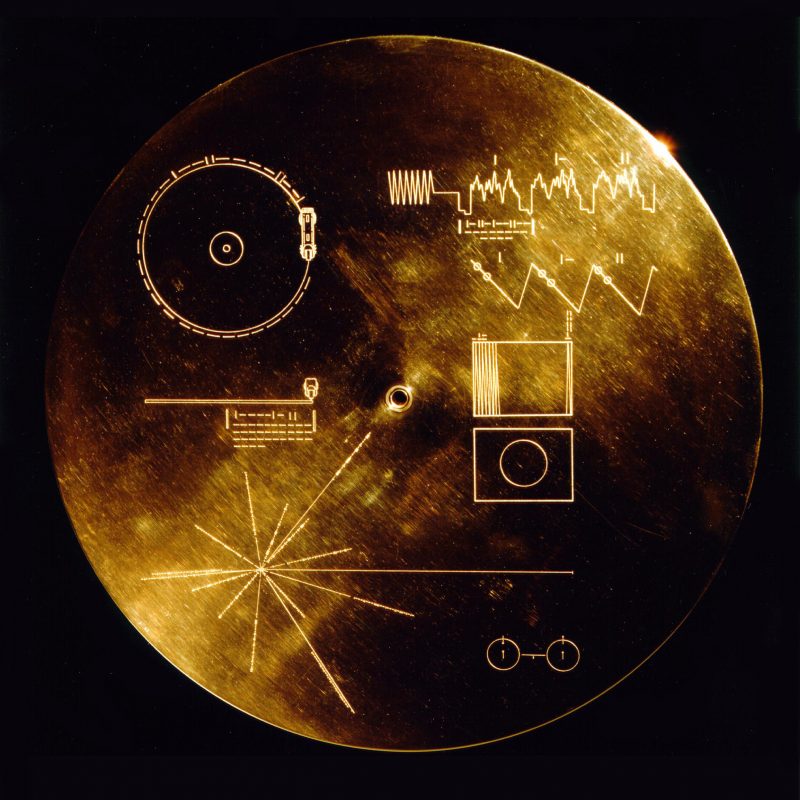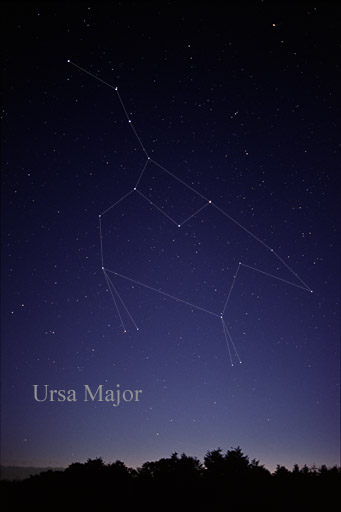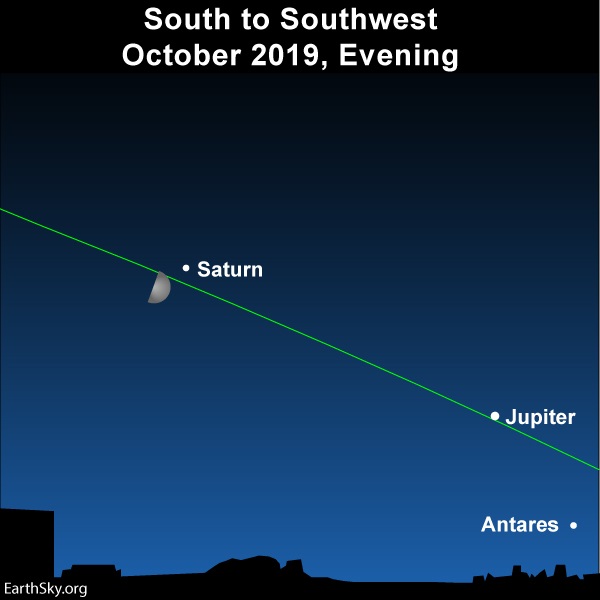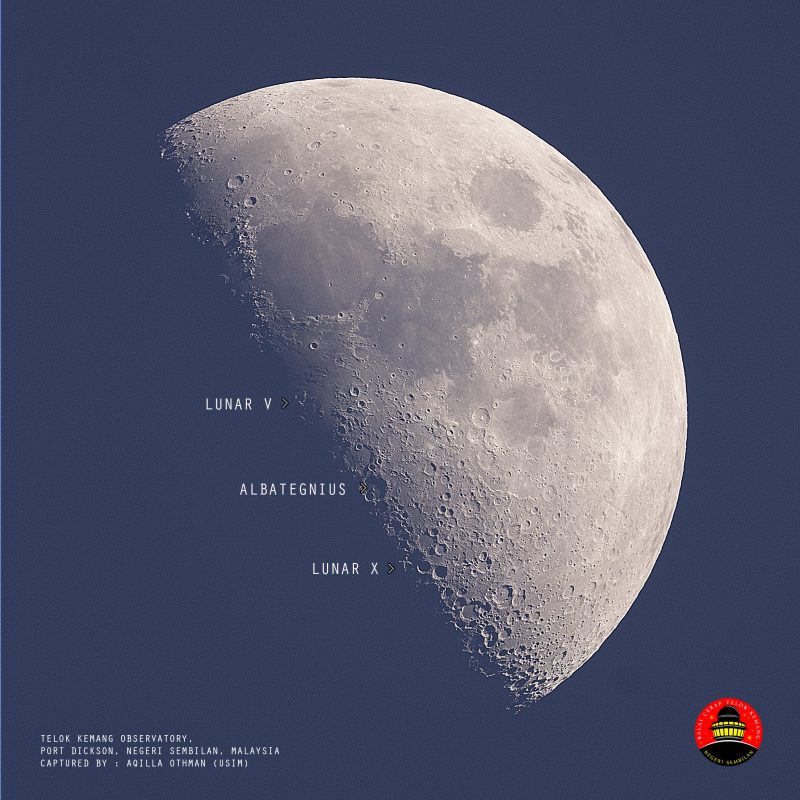

Artist’s concept of Venus – brightest planet visible from Earth and a dazzling light low in the west after sunset now – in contrast the brightness of the giant planet in the distant star system HR 5183. Image via UC Riverside.
HR 5183b is an exoplanet – discovered earlier this year – orbiting a distant sun some 103 light-years away in the direction to our constellation Virgo the Maiden. The planet has at least 3 times the mass of Jupiter, our solar system’s most massive and biggest world. Even more interestingly, the giant exoplanet HR 5183b has a highly eccentric orbit. If its orbit were placed within our solar system, this huge world would travel closer to the sun than Jupiter, then swing outward again beyond the orbit of Neptune. Its wild orbit gave it the nickname of the whiplash planet. Shortly after its discovery, astronomers said such a large planet in such an orbit precluded the presence of an Earth-like planet in the same solar system. But a new study – led by astronomer Stephen Kane at University of California Riverside and published in The Astronomical Journal on October 31 – suggests otherwise. According to the authors of the new study:
Our results show that, despite the incredible perturbing influence of the giant planet, there remain a narrow range of locations within the habitable zone [the realm of a solar system within which liquid water can exist] where terrestrial planets [planets like Earth] may reside in long-term stable orbits.
In other words, the star system HR 5183 could have an Earth-like planet in it, and that planet could harbor life.
That’s interesting. And it’s also tantalizing to realize what an living beings on such a planet would see in their sky. HR 5813b, the eccentric giant in Kane’s study, takes nearly 75 years to orbit its star. But the moment this giant finally swings past its smaller neighbor would be a breathtaking, once-in-a-lifetime event. Kane explained:
When the giant is at its closest approach to the Earth-like planet, it would be 15 times brighter than Venus — one of the brightest objects visible with the unaided eye. It would dominate the night sky.

View at EarthSky Community Photos. | Here’s an actual photo of Mercury (far left), Venus (middle) and the moon on a recent evening (October 29, 2019). Imagine seeing HR 5183b in this scene? As the artist’s concept at the top of this post shows, it’d be much brighter than Venus! Image via Asger Mollerup at Phu Lan Chang Mountain in the Khao Wong Valley, northeast Thailand. Thank you, Asger!
The planets in our solar system also have eccentric orbits; but they’re not highly eccentric. Instead, they’re very nearly circular. A statement from UC Riverside explained:
Conventional wisdom says that a giant planet in eccentric orbit is like a wrecking ball for its planetary neighbors, making them unstable, upsetting weather systems, and reducing or eliminating the likelihood of life existing on them.
Questioning this assumption, Kane and Caltech astronomer Sarah Blunt (@SarahCBlunt on Twitter) tested the stability of an Earth-like planet in the HR 5183 solar system … Kane and Blunt calculated the giant planet’s gravitational pull on an Earth analog as they both orbited their star.
Kane continued:
In these simulations, the giant planet often had a catastrophic effect on the Earth twin, in many cases throwing it out of the solar system entirely. But in certain parts of the planetary system, the gravitational effect of the giant planet is remarkably small enough to allow the Earth-like planet to remain in a stable orbit.
The team found that the smaller, terrestrial planet has the best chance of remaining stable within an area of the solar system called the habitable zone — which is the territory around a star that is warm enough to allow for liquid-water oceans on a planet.
These findings not only increase the number of places where life might exist in the solar system described in this study — they increase the number of places in the universe that could potentially host life as we know it.
Read more via UC Riverside: The most spectacular celestial vision you’ll never see
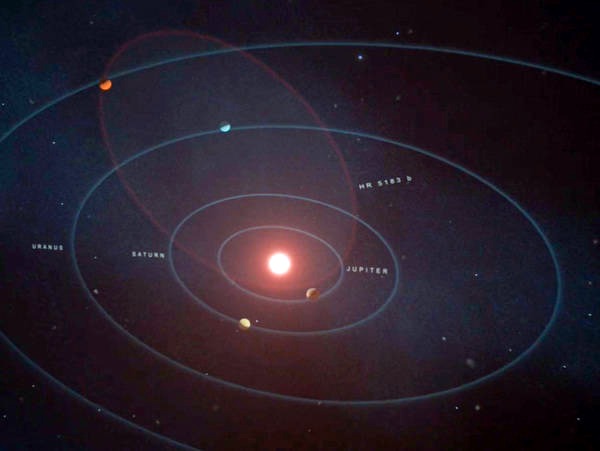
Comparison of HR 5183b’s eccentric orbit to the more circular orbits of the planets in our own solar system. Image via W. M. Keck Observatory/ Adam Makarenko/ UC Riverside.
Bottom line: Earlier this year, astronomers discovered a huge planet in a highly eccentric orbit, orbiting the star HR 5183, located 103 light-years away. The presence of such a planet was thought to preclude stable orbits for Earth-like planets in the same system. A new study shows – on the contrary – that Earth-like worlds can exist in this system. If one does, and if it’s inhabited, its citizens will witness a spectacular event every 75 years, whenever the giant planet HR 5183b is closest to its star. At such times, the giant planet would appear unlike anything we’ve ever seen, 15 times brighter in the sky than Venus!
Source: In the Presence of a Wrecking Ball: Orbital Stability in the HR 5183 System
from EarthSky https://ift.tt/33kud2b


Artist’s concept of Venus – brightest planet visible from Earth and a dazzling light low in the west after sunset now – in contrast the brightness of the giant planet in the distant star system HR 5183. Image via UC Riverside.
HR 5183b is an exoplanet – discovered earlier this year – orbiting a distant sun some 103 light-years away in the direction to our constellation Virgo the Maiden. The planet has at least 3 times the mass of Jupiter, our solar system’s most massive and biggest world. Even more interestingly, the giant exoplanet HR 5183b has a highly eccentric orbit. If its orbit were placed within our solar system, this huge world would travel closer to the sun than Jupiter, then swing outward again beyond the orbit of Neptune. Its wild orbit gave it the nickname of the whiplash planet. Shortly after its discovery, astronomers said such a large planet in such an orbit precluded the presence of an Earth-like planet in the same solar system. But a new study – led by astronomer Stephen Kane at University of California Riverside and published in The Astronomical Journal on October 31 – suggests otherwise. According to the authors of the new study:
Our results show that, despite the incredible perturbing influence of the giant planet, there remain a narrow range of locations within the habitable zone [the realm of a solar system within which liquid water can exist] where terrestrial planets [planets like Earth] may reside in long-term stable orbits.
In other words, the star system HR 5183 could have an Earth-like planet in it, and that planet could harbor life.
That’s interesting. And it’s also tantalizing to realize what an living beings on such a planet would see in their sky. HR 5813b, the eccentric giant in Kane’s study, takes nearly 75 years to orbit its star. But the moment this giant finally swings past its smaller neighbor would be a breathtaking, once-in-a-lifetime event. Kane explained:
When the giant is at its closest approach to the Earth-like planet, it would be 15 times brighter than Venus — one of the brightest objects visible with the unaided eye. It would dominate the night sky.

View at EarthSky Community Photos. | Here’s an actual photo of Mercury (far left), Venus (middle) and the moon on a recent evening (October 29, 2019). Imagine seeing HR 5183b in this scene? As the artist’s concept at the top of this post shows, it’d be much brighter than Venus! Image via Asger Mollerup at Phu Lan Chang Mountain in the Khao Wong Valley, northeast Thailand. Thank you, Asger!
The planets in our solar system also have eccentric orbits; but they’re not highly eccentric. Instead, they’re very nearly circular. A statement from UC Riverside explained:
Conventional wisdom says that a giant planet in eccentric orbit is like a wrecking ball for its planetary neighbors, making them unstable, upsetting weather systems, and reducing or eliminating the likelihood of life existing on them.
Questioning this assumption, Kane and Caltech astronomer Sarah Blunt (@SarahCBlunt on Twitter) tested the stability of an Earth-like planet in the HR 5183 solar system … Kane and Blunt calculated the giant planet’s gravitational pull on an Earth analog as they both orbited their star.
Kane continued:
In these simulations, the giant planet often had a catastrophic effect on the Earth twin, in many cases throwing it out of the solar system entirely. But in certain parts of the planetary system, the gravitational effect of the giant planet is remarkably small enough to allow the Earth-like planet to remain in a stable orbit.
The team found that the smaller, terrestrial planet has the best chance of remaining stable within an area of the solar system called the habitable zone — which is the territory around a star that is warm enough to allow for liquid-water oceans on a planet.
These findings not only increase the number of places where life might exist in the solar system described in this study — they increase the number of places in the universe that could potentially host life as we know it.
Read more via UC Riverside: The most spectacular celestial vision you’ll never see

Comparison of HR 5183b’s eccentric orbit to the more circular orbits of the planets in our own solar system. Image via W. M. Keck Observatory/ Adam Makarenko/ UC Riverside.
Bottom line: Earlier this year, astronomers discovered a huge planet in a highly eccentric orbit, orbiting the star HR 5183, located 103 light-years away. The presence of such a planet was thought to preclude stable orbits for Earth-like planets in the same system. A new study shows – on the contrary – that Earth-like worlds can exist in this system. If one does, and if it’s inhabited, its citizens will witness a spectacular event every 75 years, whenever the giant planet HR 5183b is closest to its star. At such times, the giant planet would appear unlike anything we’ve ever seen, 15 times brighter in the sky than Venus!
Source: In the Presence of a Wrecking Ball: Orbital Stability in the HR 5183 System
from EarthSky https://ift.tt/33kud2b



